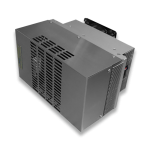- Joined
- Sep 3, 2019
- Messages
- 2,978 (1.76/day)
- Location
- Thessaloniki, Greece
| System Name | PC on since Aug 2019, 1st CPU R5 3600 + ASUS ROG RX580 8GB >> MSI Gaming X RX5700XT (Jan 2020) |
|---|---|
| Processor | Ryzen 9 5900X (July 2022), 150W PPT limit, 79C temp limit, CO -9~14 |
| Motherboard | Gigabyte X570 Aorus Pro (Rev1.0), BIOS F37h, AGESA V2 1.2.0.B |
| Cooling | Arctic Liquid Freezer II 420mm Rev7 with off center mount for Ryzen, TIM: Kryonaut |
| Memory | 2x16GB G.Skill Trident Z Neo GTZN (July 2022) 3600MHz 1.42V CL16-16-16-16-32-48 1T, tRFC:288, B-die |
| Video Card(s) | Sapphire Nitro+ RX 7900XTX (Dec 2023) 314~465W (387W current) PowerLimit, 1060mV, Adrenalin v24.3.1 |
| Storage | Samsung NVMe: 980Pro 1TB(OS 2022), 970Pro 512GB(2019) / SATA-III: 850Pro 1TB(2015) 860Evo 1TB(2020) |
| Display(s) | Dell Alienware AW3423DW 34" QD-OLED curved (1800R), 3440x1440 144Hz (max 175Hz) HDR1000, VRR on |
| Case | None... naked on desk |
| Audio Device(s) | Astro A50 headset |
| Power Supply | Corsair HX750i, 80+ Platinum, 93% (250~700W), modular, single/dual rail (switch) |
| Mouse | Logitech MX Master (Gen1) |
| Keyboard | Logitech G15 (Gen2) w/ LCDSirReal applet |
| Software | Windows 11 Home 64bit (v23H2, OSB 22631.3155) |
I think that 74mm² is the 8core chiplet.The cpu die area is split into pieces on Ryzen 3000 chips. Zen+ and previous only had a single die.
Which die area is Noctua referencing? the I/O chip?
I liked the point you brought up earlier about Tim 10 Wm2K vs LM 100 Wm2K thermal transmittance.
You'd think the solder I removed and replaced with TIM would had made a HUGE difference. Nah, not like you think.
I'm running a De-lidded 2700x, solder replaced TIM with the stock cooler and it changed the effects of the processor none.
It's not the IHS plate, or the TIM / LM..... It's the density of the transistor count on small die. This is where the "temp spikes" come from.
I can agree for the density of those small dies, but having high thermal resistance (TIM over LM) would only make things worst.
Not having any difference from delidded 2700X I think its because of soldered IHS on the die, over other CPUs that only having "regular" TIM under the hood by stock (and not soldered).
Yes yes... Thats one reason (among others) there is a difference between TDP and max power draw.Not all the cpu heat is dissipated to the heat sink. A great deal of it yes, but some is dissipated through the board as well.










![20200201_224847[1].jpg](https://tpucdn.com/forums/data/attachments/133/133379-c863a9263890b463db2262fde5fa5d85.jpg)


